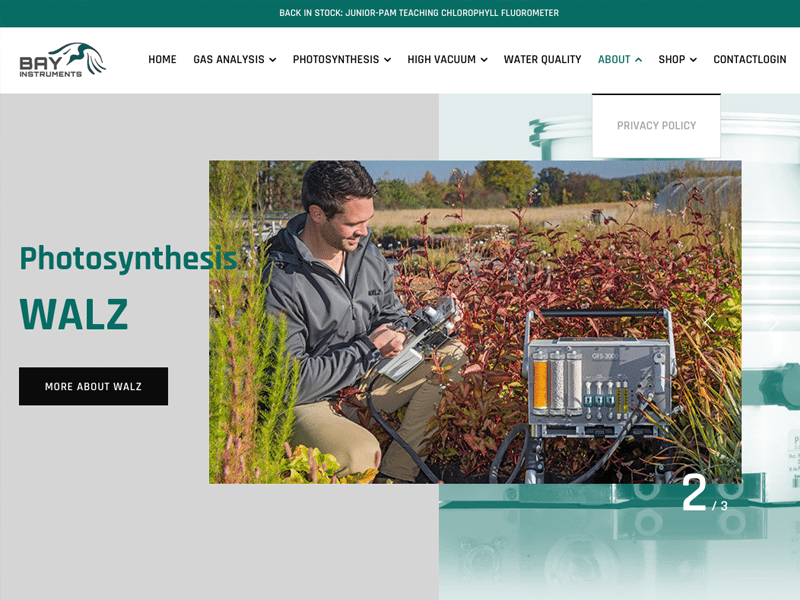1oo Stories

People
From Lab Discovery to Global Innovation: How UMCES Research Sparked the Creation of Bay Instruments

In the early 1990s, Todd Kana was a Research Associate Professor at the University of Maryland Center for Environmental Science’s Horn Point Laboratory, immersed in the complex world of aquatic photosynthesis and nutrient cycling. At the time, researchers were grappling with a major challenge: how to accurately measure nitrogen gas (N₂) in water, a critical piece of understanding how ecosystems process excess nutrients like nitrate.
For Kana, the question of nitrogen wasn’t just academic. Excess nitrogen from fertilizers and wastewater can fuel algal blooms, degrade water clarity, and trigger low-oxygen—or hypoxic—conditions that are harmful to aquatic life. Understanding how nitrogen is removed from ecosystems through a process called denitrification became central to his work. But measuring it required a new solution.
“Back then, measuring dissolved nitrogen was extremely difficult,” Kana recalls. “So we developed a novel method for detecting nitrogen gas in water using molecular mass—the weight of the molecules—rather than traditional chemical indicators.”
Their innovation led to the development of a lab-based technique using membrane inlet mass spectrometry (MIMS), which enabled rapid andresulted in the development of a lab-based technique using membrane inlet mass spectrometry (MIMS) that allowed for rapid, high-precision detection of nitrogen and other dissolved gases. When Kana and his team published their findings in 1994, word spread quickly throughout the scientific community. Researchers across the globe began reaching out—not just for the data, but for the tools.
By the early 2000s, Demand had grown so significantly that Kana took a bold step and launched Bay Instruments, LLC in 2000 to manufacture and advance the very tools that had been developed at UMCES’s the demand had grown so significantly that Kana took a bold step and launched Bay Instruments, LLC in 2000 to manufacture and advance the very tools that were developed at Horn Point Laboratory. The company’s specialized MIMS technology enables researchers worldwide to better study denitrification, aquatic metabolism, photosynthesis, and more.[1]
“We realized the application was just as important as the instrumentation,” Kana says. “We’ve always taken a hands-on approach, providing expertise to our customers at every step.”
Bay Instruments quickly earned an international following. Their systems are used in Europe, China, Australia, and New Zealand. Students who train with the equipment often bring it to their new institutions, spreading both the technology and its application around the world.
Now based in Easton, Maryland, Bay Instruments shares space with fellow UMCES-inspired business Green Eyes and continues to grow organically. “We speak the same scientific language,” Kana says of his collaboration with fellow researcher-turned-entrepreneur Vince Kelly.
Kana’s work contributed to a clearer understanding of how excess nutrients can be removed from aquatic systems—helping address one of the Chesapeake Bay’s most pressing challenges: nitrogen pollution from the Susquehanna River and other tributaries.
“This research gave us the means to understand the environmental process that can rid us of nitrogen pollution,” Kana says. “It all started at Horn Point.”
This is the core part of the story: UMCES developed these tools and enabled our scholars to launch this company. Today, others can use these tools. Can we try to get this higher in the story?






